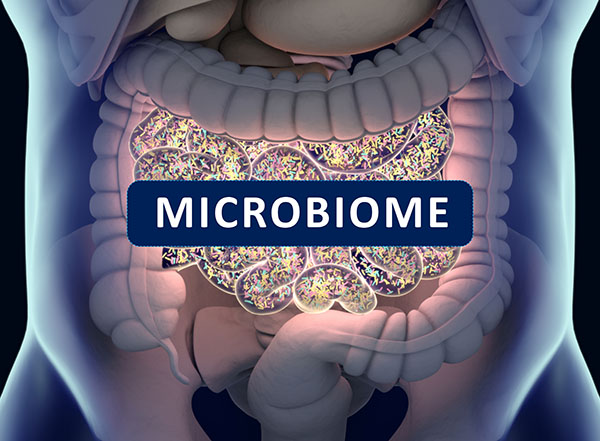
Several studies reported that an herbal decoction used in traditional Chinese medicine has the ability to halt the progression of liver fibrosis. Huang qi decoction (HQD) is made up of various herbs that exhibit antioxidant activity. In a recent study published in The American Journal of Chinese Medicine, researchers from Shuguang Hospital, which is affiliated to Shanghai University of Traditional Chinese Medicine, investigated the mechanisms behind its hepatoprotective ability. They discovered that HQD can inhibit an intracellular signaling pathway that is heavily involved at various stages during development.
Huang qi decoction
HQD is an herbal formulation used by the ancient Chinese to treat diabetes mellitus. It is made from a combination of different herbs, such as astragalus, poria, trichosanthes, ophiopogon, schisandra, licorice, and renmannia. The main active ingredient of HQD, astragaloside IV, is said to have protective effects on major bodily systems, such as the cardiovascular, immune, digestive, and nervous systems. Astragaloside IV also has antioxidant, anti-apoptotic, and antiviral activities. (Related: Prevent liver fibrosis with TCM.)
Over the years, numerous studies have investigated the various therapeutic applications of HQD. HQD has proven itself effective in treating conditions that affect the heart, liver, and kidneys. A recent study in the journal Evidence-Based Complementary and Alternative Medicine reported that appropriate doses of HQD can treat endothelium-related vascular complications through antioxidant mechanisms. HQD is also shown to improve blood urea nitrogen, albuminuria, and blood glucose levels in rats with diabetic nephropathy (kidney disease). Another study in the Cochrane Database of Systematic Reviews found that HQD can be used to treat nephrotic syndrome – a kidney disorder characterized by excessive protein excretion in urine – because it can increase plasma albumin and reduce urine albumin excretion, blood cholesterol, and triglyceride levels.
HQD's traditional use as treatment for liver disease is also corroborated by scientific studies. One such study involving gene expression profiling analysis reported that HQD regulates multiple genes and profibrogenic and inflammatory signaling pathways to ameliorate liver fibrosis lesions. An animal study also suggested that the ability of HQD to alleviate liver fibrosis may be due to its involvement in the regulation of bile acid metabolism enzymes. HQD may also have an inhibitory effect on chenodeoxycholic acid, one of the main bile acids produced by the liver that could induce hepatic stellate cell (HSC) proliferation and activation. The activation of HSCs in the presence of liver injury leads to the development of liver fibrosis.
HQD prevents liver fibrosis by inhibiting the Notch signaling pathway
In the current study, researchers investigated whether or not HQD prevents liver fibrosis by affecting the Notch signaling pathway. Notch signaling is involved in ductular reactions and fibrosis.
For their in vivo experiment, the researchers induced cholestatic liver fibrosis in rats by common bile duct ligation (BDL). At the end of the first week, they randomly divided the rats into a model group (i.e., BDL), an HQD group, and a sorafenib-positive control group (SORA). They treated the rats with HQD for three weeks. To confirm bile duct proliferation and liver fibrosis, the researchers used tissue staining. They evaluated the activation of the Notch signaling pathway by analyzing expressions of Notch-1, -2, -3, and -4, Jagged (JAG) 1, and Delta-like (DLL)-1, -3, and -4.
Their results showed that HQD reduced the deposition of collagen and the hydroxyproline (Hyp) content of liver tissue. Hyp is a biomarker in liver diseases as it is detected specifically in collagen, which plays a major role in liver fibrosis. HQD also inhibited the activation of HSCs compared with the BDL group. In addition, HQD significantly decreased the protein and mRNA expressions of TGF-B1, a regulator of fibrosis, and alpha-SMA, an indicator of HSC activation.
On the other hand, HQD significantly enhanced the expression of the Smad 7 protein and reduced biliary epithelial cell proliferation. Smad 7 can inhibit TGF-B signaling to prevent fibrosis. HQD also reduced the mRNA levels of CK7, CK8, CK18, SRY-related high mobility group-box gene (SOX) 9, epithelial cell adhesion molecule (EpCAM), and the positive areas of CK19 and OV6. Furthermore, HQD reduced the mRNA and protein expressions of Notch-3, -4, JAG1, and DLL-1, -3 compared to the BDL group.
Based on these results, the researchers concluded that HQD can prevent biliary liver fibrosis by inhibiting the Notch signaling pathway, making it a potential treatment for cholestatic liver disease.
Sources include:
Please contact us for more information.























